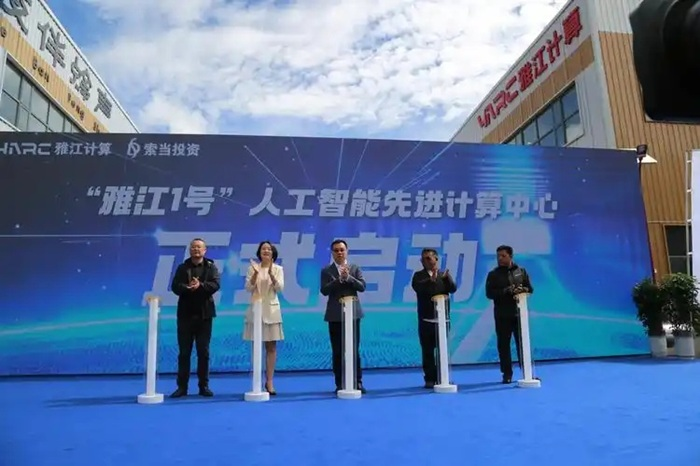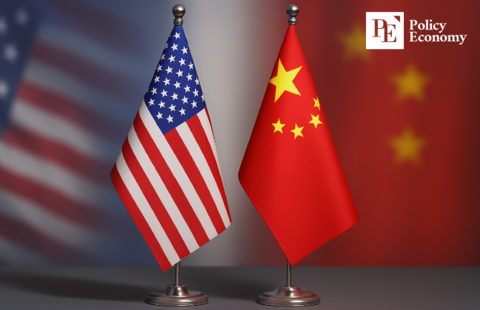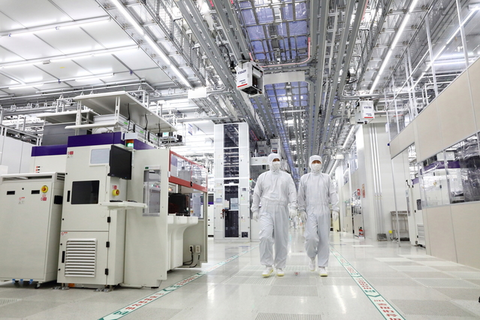Tibet, which has emerged as a power supply site for China's AI computing center, installs the world's largest hydroelectric turbine
Input
Modified
China Prepares to Install World’s Largest Hydropower Turbine in Tibet Estimated to Reduce Carbon Emissions by 3.4 Million Tons From Follower to Leader in Global Hydropower Development

China is set to install the world’s largest 500-megawatt (MW) impulse turbine at the Datang Zhala Hydropower Station in the Tibet Autonomous Region. The installation marks a major milestone in China’s push for technological leadership in renewable energy and infrastructure expansion in pursuit of its carbon neutrality goals.
Record-Breaking Turbine Completed for Datang Zhala Station
According to the South China Morning Post (SCMP) on July 4, the impulse turbine independently developed by China has the highest single-unit capacity in the world. Two turbines will be installed at the station. Each turbine, weighing 80 tons, measuring 6.23 meters in diameter and 1.34 meters in height, has completed four years of design and testing and departed the Harbin Electric Group’s facility in northeastern China on July 3.
The turbine is made of martensitic stainless steel, known for its durability, strength, and corrosion resistance. It features 21 water buckets and an outer diameter of 6.23 meters. Impulse hydropower works by directly shooting high-speed water jets onto the turbine to generate rotation, unlike traditional reservoir-based hydropower systems. This method harnesses the kinetic energy of water falling from great heights.
A Harbin Electric Group representative said, “The core parts of the turbine are made of martensitic stainless steel, which enhances durability and corrosion resistance, improving generation efficiency from 91% to 92.6%. This allows for an additional 190,000 kilowatt-hours (kWh) of electricity per day. It can replace 1.3 million tons of coal annually and reduce carbon dioxide emissions by 3.4 million tons.”
The Datang Zhala Hydropower Station is located on the Yuchu River, a tributary of the Nu River, which flows from southwestern China through Yunnan Province into eastern Myanmar before reaching the Andaman Sea. The vertical drop between the reservoir level and the turbine is 671 meters. China’s Science and Technology Daily described the turbine as the “heart” of the hydropower system, adding that the bucket-shaped wheel plays a vital role in converting the water flow’s kinetic energy into mechanical energy.
Energy Potential of the Tibetan Plateau
China has stepped up dam construction efforts since 2020 in line with its 2060 carbon neutrality pledge. According to the International Hydropower Association, China continued to lead the global hydropower sector last year, accounting for most of Asia’s new capacity additions while heavily investing in energy storage solutions.
The Tibetan Plateau’s elevation drop is a key enabler. The Yarlung Tsangpo River, which originates from glaciers and snowmelt in the western Tibetan Himalayas, stretches 2,840 kilometers, making it the third-longest river in China. It flows eastward into India’s Assam region as the Brahmaputra River, eventually joining the Meghna River and emptying into the Bay of Bengal via Bangladesh.
Notably, the Chinese section forms the Yarlung Tsangpo Grand Canyon, one of the deepest gorges in the world, with an average elevation difference of 5,000 meters and a maximum of 7,667 meters. This area is also among the rainiest in China. The combination of steep elevation and heavy rainfall makes it ideal for hydropower. At the time of initial planning in 2020, Yan Zhiyong, chairman of China’s state-owned Power Construction Corporation, noted, “The Yarlung Tsangpo is the most suitable river in the world for hydropower, with a 2,000-meter drop found over just a 50-kilometer stretch, representing a development potential of nearly 700 billion kWh.”
Tibet’s wind potential is also among the best globally. At an average altitude of over 3,000 meters, the region earns its nickname “the Roof of the World” for a reason. China’s National Climate Center stated in a report, “Tibet has numerous areas with strong and consistent winds, enabling potential wind power installations of up to 600 GW.” This equals the combined wind power output of the UK, Germany, and France.

China’s ‘East Data, West Computing’ Strategy Expands to Tibet
China’s emphasis on the Tibetan hydropower project is also seen as a strategic move to power energy-intensive AI computing facilities. Last month, China completed its first advanced AI computing center in Tibet. The “Yajiang No. 1” computing center in Shannan, Tibet Autonomous Region, held its inauguration on June 18 and has officially begun operations.
This project marks the first implementation of China’s national “East Data, West Computing” (东数西算) strategy in the western highlands. Launched in 2022, the strategy aims to shift data processing needs from the energy-hungry eastern provinces to resource-rich western regions. Until now, it had expanded only as far west as Ningxia Hui Autonomous Region and Gansu Province; Tibet is the newest frontier.
Jointly funded by Tibet Yajiang Computing Tech and the Shannan City Naidong District government, the project has deployed 256 high-performance servers, delivering 2,000 petaflops of computing power (1 petaflop equals 1 quadrillion operations per second). This system can handle up to 4 million hours of AI training per year for eastern regions, saving 320 million kWh of electricity and cutting carbon dioxide emissions by 280,000 tons. Additionally, waste heat recovery will help save 12,000 tons of coal annually, balancing technological development with the protection of the highland ecosystem.
Han Shuangshuang, CEO of Tibet Yajiang Computing Tech, told Science and Technology Daily, “Yajiang No. 1 serves as a large-scale eco-friendly AI computing hub on the Tibetan Plateau, playing a central role in achieving national strategies and promoting high-quality regional development. This project goes beyond basic infrastructure investment—it contributes to activating the digital economy, environmental conservation, workforce development, and a new model for digital cooperation between eastern and western China.” He added, “The center will offer customized digital solutions including AI training, smart healthcare, and high-altitude ecological monitoring, among other computing services.”





















